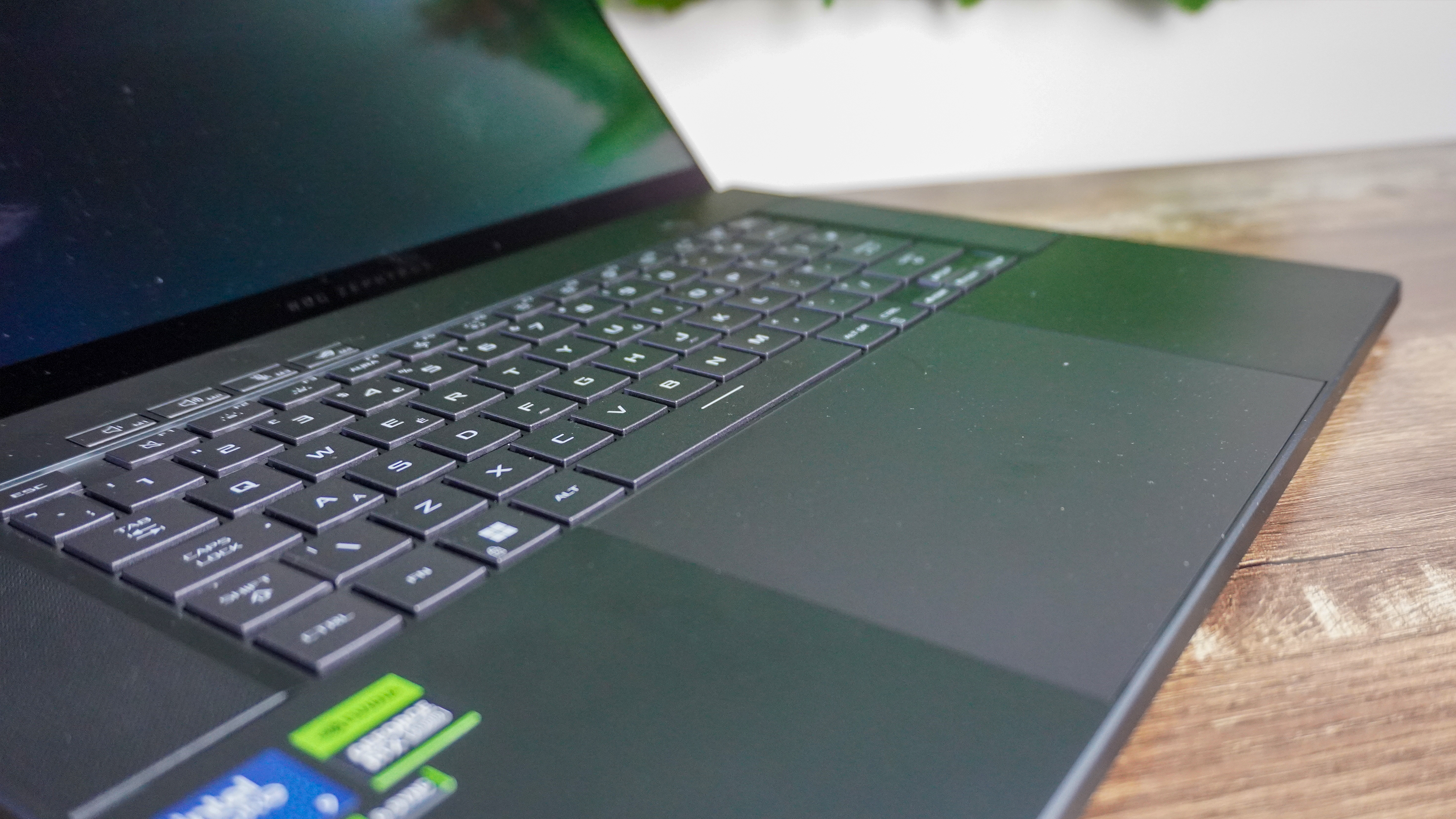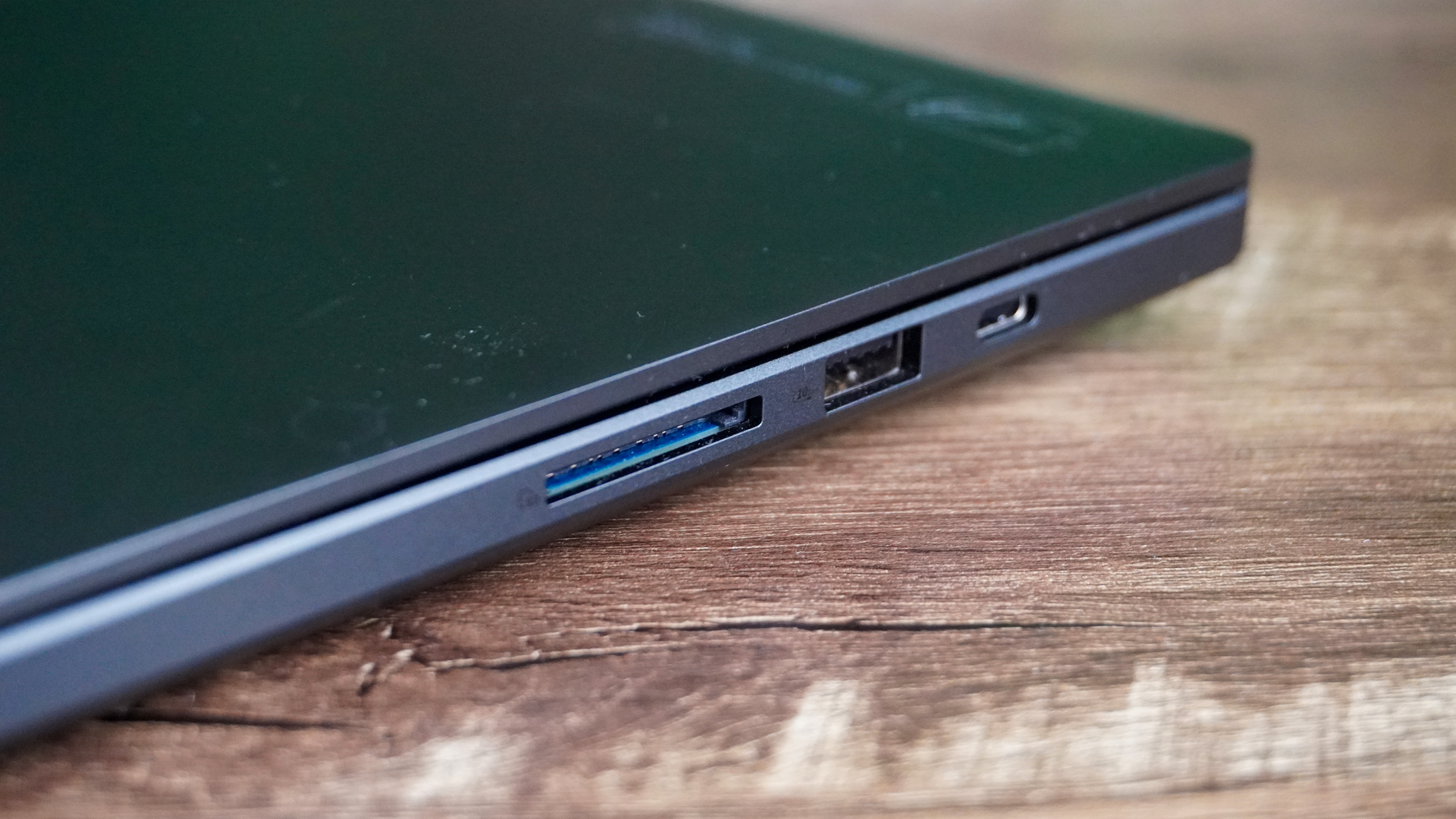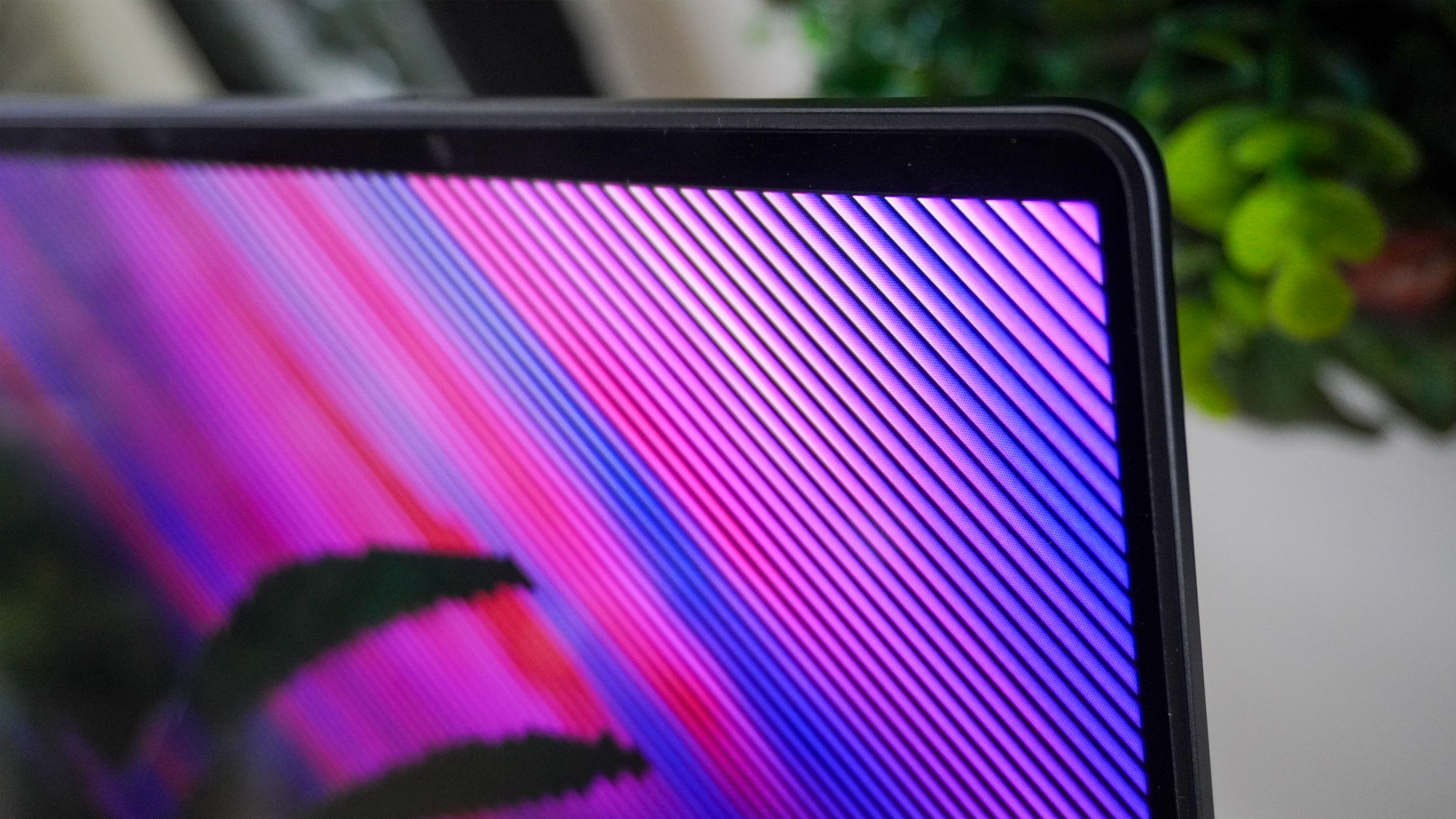
How would I sum up my time with the 2024 Asus ROG Zephyrus G16? Much like your average problematic relationship, it’s complicated.
On first impression, you think everything is going the right way, and I absolutely stand by my thoughts back at CES 2024 that this machine is essentially the Windows MacBook Pro. That aluminum unibody enclosure brings a premium, refined aesthetic rarely seen in gaming laptops, the OLED display up top is drop-dead gorgeous and the speakers give Apple a real run for their money.
Add the tasty ergonomics of a great keyboard and touchpad, alongside a respectable port array, and this really starts to tick all the right boxes… until it doesn’t. When you turn it on and really start to put it through its paces, you start to see how the RTX 4090 GPU in here has been somewhat hamstrung.
You may have noticed reviews of the G16 are very polarized — some reviewers have loved it while others haven’t. I fall into the latter of those two categories for two specific reasons:
- The 115W Thermal Design Power (TDP — basically how much power is being fed to the internals) doesn’t hold a candle to similarly-priced competition.
- There is a weird tussle happening between the Windows power management and the ROG Armoury Crate’s own power plan settings — leading to inconsistent performance at best and disappointing frame rates at worst for an RTX 4090.
At $3,299 for this maxed out configuration, I just think you deserve the best of both worlds — this lovely attention to detail paired with the horsepower to play games at their best, you know?
Of course, this may all be cleared right up with the upcoming new model announced at Computex 2024, which sports AMD’s Ryzen 300 AI CPU. But there are some more fundamental issues to address here in the raw power going to those internals (to actually make that price worthwhile), which makes this hard to recommend as one of the best gaming laptops you can buy.
Asus ROG Zephyrus G16 (2024): Cheat Sheet
- What is it? This is a premium gaming laptop.
- Who is it for? People searching for gaming performance.
- What does it cost? The Asus ROG Zephyrus G16 starts at $1,999, but the spec we tested weighs in at $3,299.
- What do we like? There has been so much more attention paid to the design, ergonomics and experience than I’ve noticed in other gaming laptops — the aluminum shell is gorgeously sleek, the OLED display is fantastic, and the keyboard/touchpad combo is a joy to use for long periods of time.
- What don’t we like? For the price you pay, performance is underwhelming, and the battery life promise of Intel Core Ultra’s efficiency never comes true. It leaves a rather bad taste in your mouth that taints all the good will from what you like about this system.
Asus ROG Zephyrus G16 (2024): Specs
Asus ROG Zephyrus G16 (2024): The ups
Like any complicated connection, the spark is immediate. This was very much the case with this all-aluminum Zephyrus G16.
I mean, how good does it look?

In a sea of garish, gargantuan gaming machines, the Zephyrus G16 stands out as one of the most beautiful laptops I’ve ever seen — and it’s not even close. The utilitarian aesthetic makes an immediate impression on you, like it feels understated but you know what this thing is capable of by just looking at it.
On top of that, the ROG Zephyrus G16's impressively sleek dimensions make it a surprisingly portable gaming laptop. Don’t get me wrong, it is a fully-loaded RTX 4090 beast, so it is a little hefty. But its slimness helps make this easy to fit into one of the best laptop bags.
And we didn’t even talk about the big thing here… well more of a small thing, as Asus replaced the over-the-top Anime Matrix display on the shell with slash lighting. This singular pulsating line adds a little dynamism and excitement to the whole affair without being too uncomfortably loud in its design.



Open it up, and you’re welcomed by a massive touchpad and a keyboard that both feel fantastic to use — the former with a smooth glass surface and snappy click, and the latter offering an impressively tactile feel to every key press.
All of this, combined with the all-round stellar screen and speaker experience, makes the big-screen ROG transcend its gaming laptop niche, and become something that you will feel comfortable using in all situations.
A treat for the eyes and ears

Another big upgrade here is the move to OLED — the 16-inch ROG Nebula OLED display with a 2,560 x 1,600-pixel resolution and 16:10 aspect ratio to be specific. It is a flash flood of mesmerizing colors to the eyes. Games like Forza Horizon 5 really showcase the vividness of this screen, alongside that 240Hz refresh rate showing the many colorful decorations of Mexico passing you in a 200 MPH blur.
Meanwhile, the deep contrast ratio really adds to the pants-wetting terror of being stalked by the Xenomorph in Alien Isolation. Any and all content, plus any creative work you may need to have color accuracy confidence is handled ably by this beauty of a panel. Sure, it may not be as bright as its LCD counterparts, but this is a worthwhile trade-off for the magnificence.
But for this to be an ultimate entertainment experience, the screen needs to be paired with good speakers, and the Zephyrus G16 absolutely delivers. The four-speaker system puts out a surprisingly healthy amount of bass that is balanced immaculately with mids that are nicely pronounced and high tones that shine.

This all combines to make for one of the best audio and visual experiences I’ve had on a gaming laptop — a mighty display with speakers that give even the best MacBook Pro a run for its money.
Asus ROG Zephyrus G16 (2024): The downs
But as you can probably guess from the score, there are problems in this love affair, and a lot of it comes down to the ROG Zephyrus G16 having all the right tools but not using them fully.
Underwhelming performance

OK. Before I begin, let me be clear. This is an RTX 4090 laptop with Intel Core Ultra 9, a ton of RAM and big storage. Of course this is going to pack some sort of punch, but something is wrong here. Let me explain this one-two punch of disappointment, and why I don’t think Asus has a fix for this.
First, the 115W TDP going to the internals is nowhere near as much as the Alienware m18 R2 or the Razer Blade 16 — both packing 175W. This leads to a notable drop in gaming frame rates when putting all three in a straight shoot-out.
Don’t get it twisted, this is still a more than playable framerate with maxed out fidelity settings. But when you’re dropping such a wad of cash on the best possible gaming laptop performance, you should expect the best.
And second, we’ve got to talk about the choice of Intel Core Ultra here. I started noticing some odd frame rate variations outside of what I would expect. For example, Cyberpunk 2077 with DLSS 3 activated ran at an oh-so sweet 119 FPS some times, but then going back to the start of the same save file several times over saw that FPS vary from the 110-plus range all the way down to 75-80 FPS.
I took a closer look at what caused this, and the trouble lies with the ROG Zephyrus G16's CPU — specifically how it handles power management modes. Typically, the Armoury Crate software should be where you can turn up the power going to the internals, and with the aforementioned competition from Alienware and Razer sporting the traditional 14th Gen Intel chipsets, their equivalent apps do this just fine.

But here, it’s almost a bit of a lucky dip whether you’re getting Armoury Crate unleashing the full power, or whether Windows’ own power management takes over and turns everything down dramatically.
Whenever I got the former, I was in business with sky high frame rates. If I got the latter, I really felt how the bottleneck made an impact. It’s an awkward fight between the two, deciding the wattage that goes to the CPU, which directly impacts how much of the GPU’s might it can actually handle.
On top of that, even when the Intel Core Ultra 9 is playing nice, it doesn’t match the Intel Core i9-14900HX found in the ROG Zephyrus G16's competitors.
Put simply, we’re at a bit of an impasse here. It’s clear that this NPU-armed chip is not ready for gaming prime time because of the software trying to handle it. I can only hope that it could be fixed with updates, but I can only review what’s in front of me. And at over three stacks, you want the best, which this just isn’t.
Hot, loud and dies fast

Definitely not one of the worst offenders when it comes to fan noise or heat, but the jet engines are prominent and the ROG Zephyrus G16 gets hot fast.
Luckily, the speakers can get loud enough to drown a decent chunk of this now, but you’re gonna want to keep this on a desk if you’re gaming. That high underside temperature may be the equivalent of sticking your private parts under a broiler!
And finally, a nod to the battery life. It’s a gaming laptop, so don’t expect the world, but while the longevity in general use is decent, even by this standard, gaming stamina is just not there.
It’s ultimately disappointing, given how we got all hyped up about the power management of Intel Core Ultra, and that’s just not come to fruition.
Asus ROG Zephyrus G16 (2024): Verdict

So how would I sum up my time with the Asus ROG Zephyrus G16? I really wanted to love it — I truly did. There is so much going for it, but the misstep of not unlocking the full horsepower potential of its beefy internals makes it a tough one to recommend.
I believe that Asus is on the way to greatness here. It’s a beautiful laptop with far more attention paid to how you use this as an actual laptop, rather than just stuffing it with prime power and compromising the usability. But at some point, the decision was made to sacrifice some performance in favor of its aesthetics, and at these high prices, I feel the best of both worlds is more of a requirement than a “nice to have.”
So in some ways, this is a positive step forward. But the ROG Zephyrus G16 needs a little more time in the oven to really challenge for the throne.







